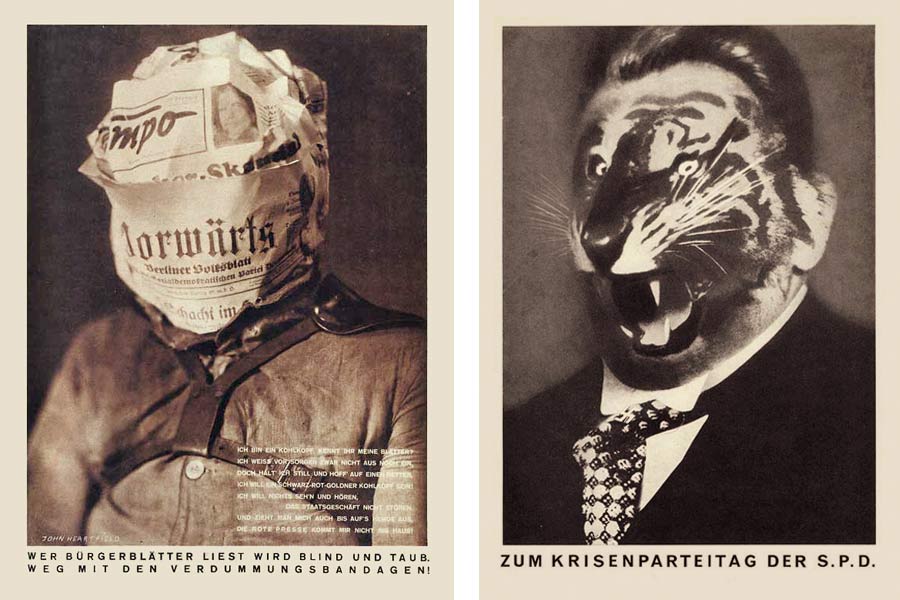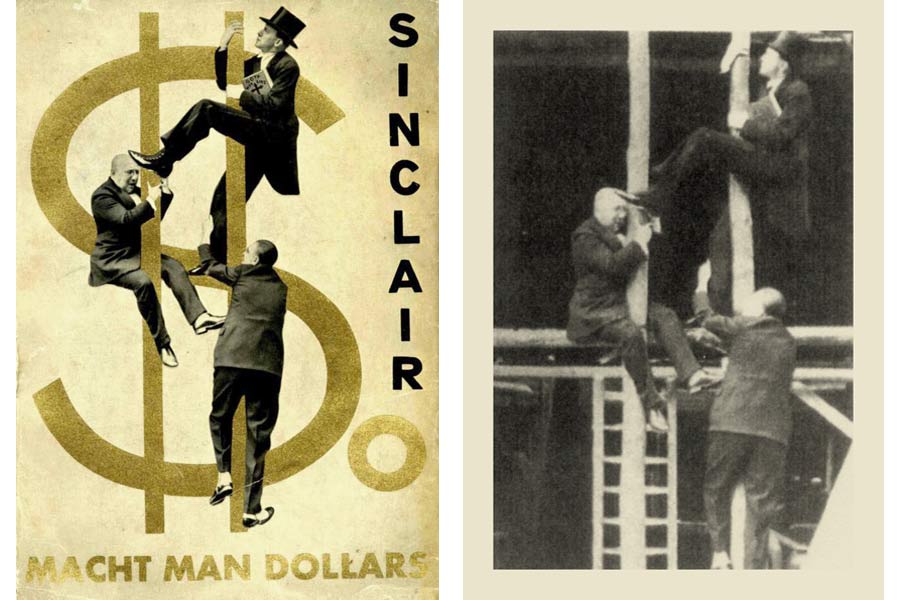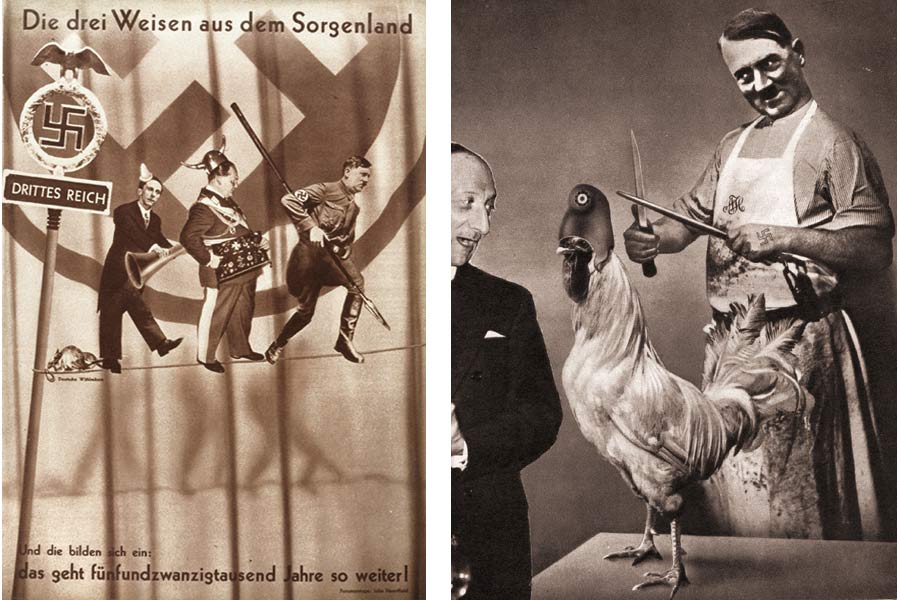
Photomontage as an art technique was initiated and developed by Dadaists in the interwar period. Back then, it proved to be the perfect tool for expressing rebellious moods and political critique. One of the first and at the same time most important artists using this technique was John Heartfield. He was German, his real name was Helmut Herzfeld. He provocatively changed his surname to an English-sounding one and through his art he strongly criticized the government in Germany. His works poke fun at politicians, showing them in absurd situations. The artist used photos from official, governmental press and then published them with new meaning. Sometimes, he also took the photos himself, like for example for the “So macht Man Dollars” project. Heartfield’s photomontages have a harsh, provocative expression as befits the head Berlin Dadaist, but even the most controversial ones conceal a metaphor and force the viewer to give a deeper thought about the world he/she lives in. The works are mostly black and white, austere, with sparse, simple typography, which is a complementary factor. They also have a touch of surrealism, strangeness which can be compared to Magritte’s tastes. Hand-crafting, with the use of simple tools such as scissors and glue, makes the montage far from ideal – it is very different from computer montages nowadays. But it is exactly this lack of idealism that establishes the character and good taste of Heartfield’s works. Besides, these days it is also a thing to stray from polished, photoshopped manipulations to manually crafted pieces or skillfully made intentional mistakes in digital graphic designs. Back to the topic of Heartfield, let’s take a closer look at one of his works:

The title is Deutsche Naturgeschichte (Natural History of Germany) and the subtitle reads: Metamorphosis, which is an allusion to Franz Kafka’s story, where the main character transforms from a human into a nasty insect.
In Heartfield’s project we can see insects with the heads of politicians, who are as follows: Friedrich Ebert (1871-1925) – as a caterpillar, Paul von Hindenburg (1847-1934) as a chrysalis, dangling from a withered bark and finally Adolf Hitler as fully functional, flying moth with a skull symbol. It is a sad metaphor of pre-war history of Germany. Hindenburg is shown as a powerless marionette and Hitler’s stepping stone towards spreading his wings and wrecking havoc. Oak leaves are an important element in the whole composition – they symbolize the everlasting power of Germany. In Heartfield’s piece we can see the leaves are considerably damaged and eaten by pests, which alludes to decomposition of the whole country. This photomontage, just like many other by Heartfield, is an apt critique of the governing that led to World War II.
The piece was put on the back cover of AIZ magazine in 1934. It’s in sepia, the composition is well balanced, the details refined and if take into account only its form – it is one of the most beautiful photomontages that were created in the avant-garde of pre-war period.

John Heartfield – Art Poster – Crisis Party Congress of the SPD – AIZ Magazine, 1931. The SPD party crisis montage refers to the close relationship of Germany’s Weimar Republic SPD party to The Nazi Party. The photomontage is also known as “The Tiger Montage”

Photo by John Heartfield for the “So macht Man Dollars” project

John Heatfield – “Appeasement” (Hitler Prepares to Kill the French Cockerel). Hitler sharpens his knife, preparing to kill the French cockerel. Bonnet, French Foreign Minister, says: “Don’t be afraid, Hitler is a vegetarian”

John Heatfield – “Peace and Fascism”. The dove of peace is transfixed by the fascist bayonet before the League of Nations building, whose white cross has become a Swastika
Heartfield’s photomontages are today an inspiration to many artists who use this technique. Some of his famous works appeared also on contemporary CD and book covers, here are some examples:

text by Anna Klos
translation by Karolina Klos


On their self-titled debut album. Laibach used his montage “Wie im Mittelalter… so im Dritten Reich” for its front cover, and the “Blut und Eisen” for the back cover.
Pingback: Project 3: The Found Image in Photomontage | Photography 2: Digital Image and Culture
Very good blog! Do you have any suggestions for aspiring writers?
I’m planning to start my own website soon but I’m a little lost on everything.
Would you advise starting with a free platform like WordPress or go for a paid option?
There are so many options out there that I’m completely overwhelmed ..
Any recommendations? Many thanks!
Hello Anna. I’m John Heartfield’s paternal grandson, John J Heartfield. I’m the curator of The Official John Heartfield Exhibition. I very much enjoyed your article. Thank you for helping to increase my grandfather’s recognition and renown. Of course, there is so much more to his life and work than you could cover in this brief article. That is why I ask every serious person who displays his work on the web to include a visible live link to The John Heartfield Exhibition (https://www.johnheartfield.com/John-Heartfield-Exhibition/). Please take a moment to review this page regarding copyright on the exhibition. (https://www.johnheartfield.com/John-Heartfield-Exhibition/heartfield-exhibition-curator/john-heartfield-copyrights). Please write directly to me (curator@johnheartfield.com) if you have any questions. All the best. John J Heartfield.
Pingback: A1 How to make a face covering – Kate Aston Digital Image & Culture